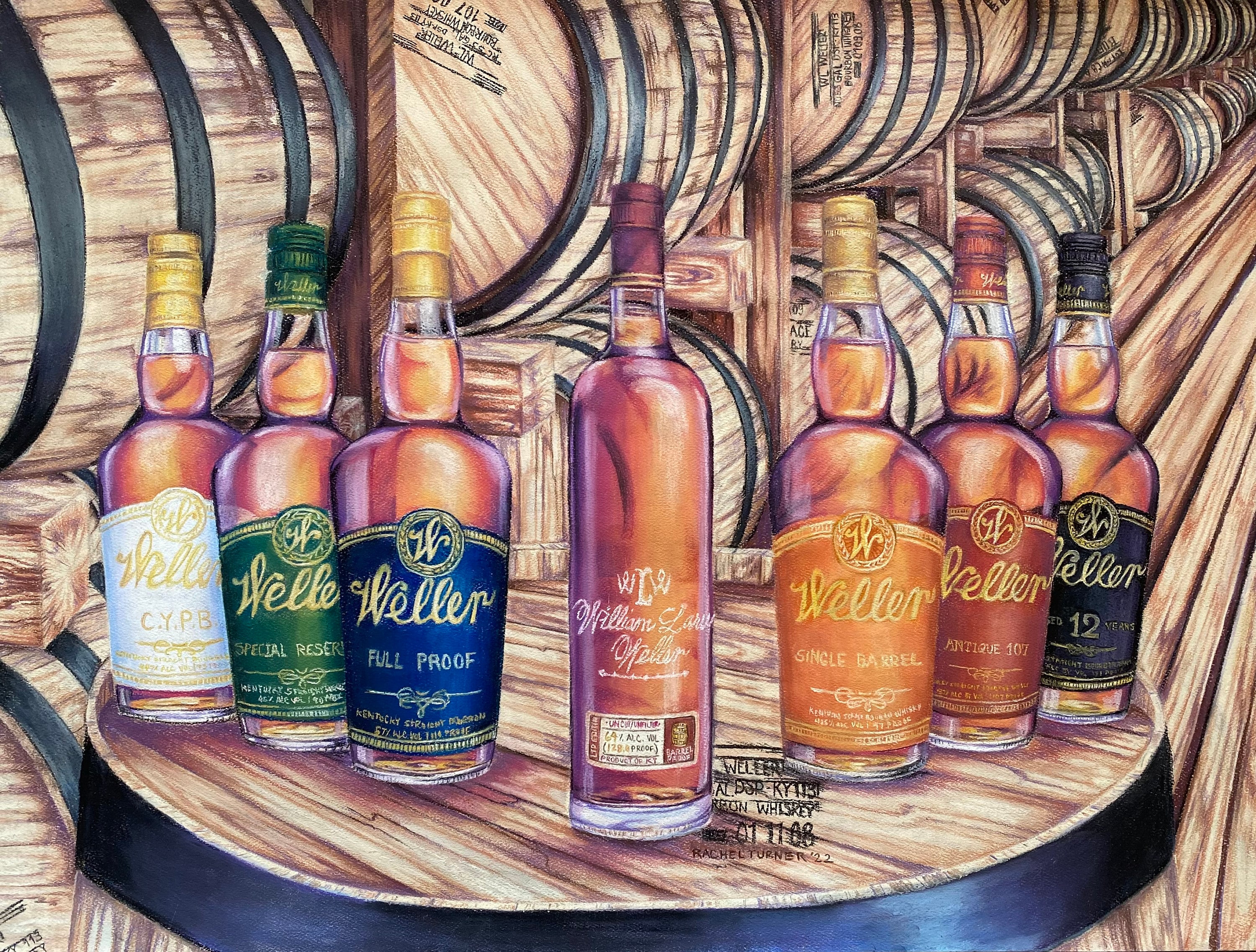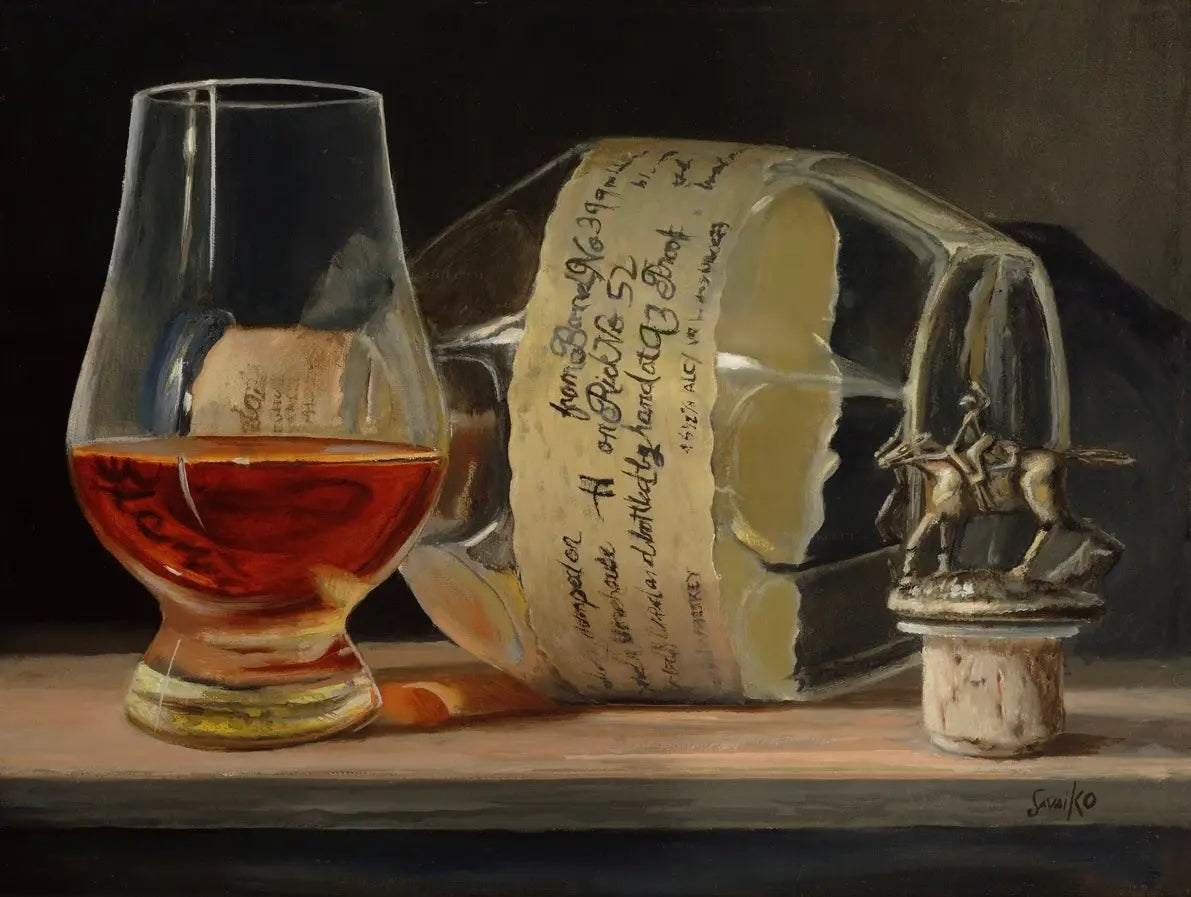Check out the World of Bourbon Art: A Trip With Culture and Craftsmanship
Check out the World of Bourbon Art: A Trip With Culture and Craftsmanship
Blog Article
The Significance of Whiskey Art in Celebrating Heritage and Craftsmanship in the Beverage Sector
The intricate relationship in between scotch art and the party of heritage and craftsmanship within the beverage sector can not be overemphasized. With thoughtfully made containers and tags, whiskey brand names envelop their historic roots and the artisanal skills that specify their production techniques. This artistic measurement not just enhances market appeal yet likewise works as a channel for social narration, promoting a much deeper connection in between the craft and the customer. As we check out the numerous aspects of this topic, fascinating questions concerning the influence of modern-day trends on conventional methods arise, prompting more examination.
The Historic Roots of Whiskey
At the heart of whiskey's appeal exists a rich tapestry of historical roots that map back to old civilizations. The beginnings of whiskey can be linked to the purification methods of the Sumerians and Babylonians around 2000 BCE, where very early forms of fermented grain drinks began to emerge. Nonetheless, it remained in the Center Ages that the art of purification developed dramatically, specifically in Ireland and Scotland, resulting in the production of bourbon as we understand it today.
The term "scotch" itself stems from the Gaelic word "uisce beatha," meaning "water of life." This expression emphasizes the social importance of scotch in Celtic cultures, where it was commonly connected with routines, events, and common bonding. By the 15th century, distillation ended up being an identified craft within monastic communities, leading the method for the establishment of lawful distilleries.
As profession routes broadened, bourbon's appeal grew, transcending local limits and catching the passion of connoisseurs worldwide. Whiskey Art. This historical journey reflects not only the craftsmanship behind scotch manufacturing but likewise its important duty in social and cultural contexts, marking it as a significant beverage throughout history
Artistic Expression in Branding
Scotch branding stands as an engaging crossway of virtuosity and business, where aesthetic identity plays a vital role fit customer assumption. The aesthetics of bourbon tags, packaging, and advertising and marketing materials reflect not only the brand's tale however additionally its core worths and heritage. Via creative expression, distilleries share a story that reverberates with customers, stimulating feelings and stimulating connections.
The use of color, typography, and imagery in branding offers to distinguish products in a saturated market. As an example, conventional motifs might evoke a sense of authenticity and craftsmanship, while modern-day layouts can symbolize advancement and forward-thinking. This tactical imaginative direction enhances brand recognition and loyalty, enabling customers to create an individual partnership with the bourbon they select.
In addition, creative expression in branding often functions as a celebration of local heritage. Distilleries often integrate local signs or historic recommendations into their layouts, producing a local color that welcomes consumers to take part in a more comprehensive cultural experience. Ultimately, the artistry behind scotch branding not only improves aesthetic charm but additionally enhances the total story of the brand name, fostering a deeper admiration for the workmanship and heritage embedded in each bottle.
Workmanship in Bottle Layout
The virtuosity evident in whiskey branding extends past aesthetic identity to incorporate the craftsmanship associated with container layout. Each bottle offers as a vessel not simply for the spirit within, but additionally for the story it outlines its beginning, top quality, and practice. The design procedure needs precise attention to detail, as elements such as shape, closure, and material add dramatically to the general assumption of the whiskey.
Craftsmanship in bottle design entails picking premium glass that can improve the whiskey's color and clarity, while also offering a responsive experience for the consumer. The shape of the bottle should be both visually enticing and useful, often showing the heritage of the brand name. Several distilleries go with special forms or printed logos that stimulate a sense of credibility and history.
Additionally, the tag design and typography play a vital duty in interacting the brand's story. Bourbon Art. A well-crafted container not only mesmerizes the consumer's eye yet additionally reinforces the brand name's dedication to high quality and practice. This way, the craftsmanship of bottle design ends up being a vital facet of the scotch experience, combining creativity with an extensive respect for heritage
Cultural Value of Whiskey Art
Celebrating tradition and workmanship, the cultural relevance of bourbon art transcends plain aesthetic appeals, linking with the social and historical stories of the regions where it originates. Each bottle have a peek at this website acts as a canvas, showing the special stories, folklore, and practices that have actually shaped regional whiskey-making methods. The complex designs commonly mirror the heritage of the distillers, integrating symbols and themes that resonate with the culture and worths of their areas.

Additionally, bourbon art plays a vital function in common gatherings and celebrations, acting as a tangible link in between individuals and their shared experiences. By valuing the creativity in scotch packaging, customers cultivate a much deeper understanding and respect for the craft, ultimately enriching their pleasure of the drink itself.
Modern Trends in Scotch Presentation
Over the last few years, the presentation of bourbon has actually developed to reflect contemporary preferences and trends while still honoring conventional craftsmanship - Limited Edition. Distilleries are progressively concentrating on aesthetic aspects that boost the total alcohol More hints consumption experience, bridging the gap between heritage and modernity
Innovative bottle styles have emerged, frequently including sustainable products and creative labels that inform compelling stories. Lots of brand names now team up with local artists, infusing their items with one-of-a-kind visual expressions that reverberate with customers. In addition, limited-edition launches are typically packaged in collectible containers, including worth and charm for connoisseurs.

Conclusion
In verdict, bourbon art offers as an important conduit for expressing the heritage and workmanship fundamental in the beverage market. Through complex branding, ingenious container designs, and culturally significant imaginative aspects, whiskey brand names successfully recognize their customs and link with customers.


Craftsmanship in container design entails choosing top quality glass that can improve the bourbon's color and clearness, while additionally giving a responsive experience for the consumer. In this method, the craftsmanship of bottle layout ends up being an essential element of the whiskey experience, combining creativity with a profound respect for heritage.
In final thought, whiskey art offers as an essential conduit for revealing the heritage and workmanship integral in the drink industry.
Report this page